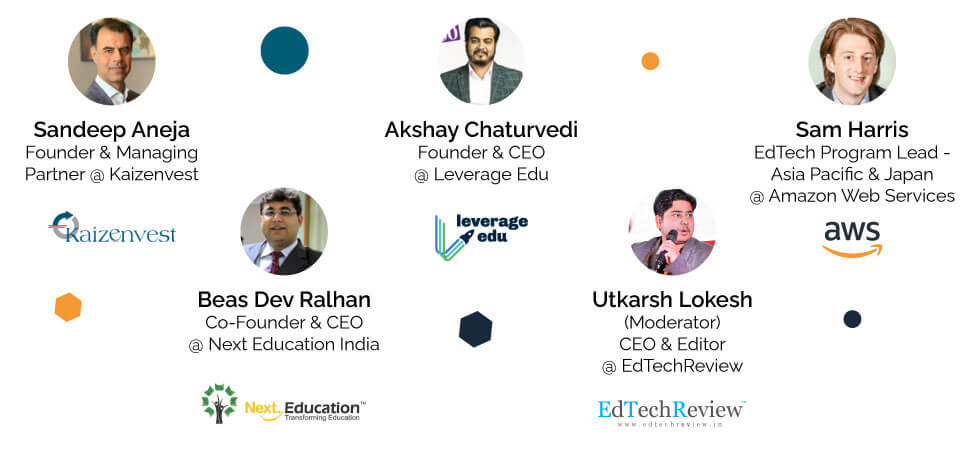How to differentiate and guard your user base, and the value props when there are a lot of players with similar business models in the market?
Akshay from Leverage Edu says that value proposition and differentiation is built within by using the best possible technology to streamline the experience for the students. Leverage Edu also uses in-house built tech. Apart from using the best technology and building great products, building the right relationship in the ecosystem is very important according to Akshay; it’s the latter that has helped them scale faster over the last few years.
On the B2B perspective, Beas points to the existence of numerous players who provide similar products for school needs. However, he also emphasizes the importance of a proper strategy in providing a good learning solution to schools. He points to the admission and training solutions being offered to the schools on daily basis. Schools are offered a scattered system whereas they expect a comprehensive solution. Beas also mentions an absence of startups in the B2B space.
Challenges for emerging EdTech start-ups and business models and how they can explore the opportunities
Sam from AWS points towards the crowding EdTech market due to the rapid digitization of education customers – students, parents, schools, universities, and ministries. It makes digital education companies focus on all functionalities. As one grows their business, he adds, the functionality requirements of the customers will continue to grow and take a more strategic shape.
On what AWS can do to support emerging start-ups around the region, Sam says AWS EdStart can be a part of the product and technology roadmap discussion be it from a security perspective, machine learning perspective, personalized learning perspective, or all the way through to ensuring scalability and elasticity. Reiterating that they want to be part of that conversation, he says that through the AWS EdStart program they connect EdTechs with their solution architects and technical program managers to drive that discussion and walk through together.
Answering a question from the audience on what the biggest challenge while selling academic products to school is, Beas says it’s the resistance towards institutional and administrative changes. Schools don’t want to change. He says it’s easier to convince the parents to invest the money than it is to convince a school; another reason why more people are in the B2C space.
Emerging business models during the pandemic and EdTech opportunities
Asked if there’s room for new business models in EdTech, and if he has seen newer business models emerging during the last few months, Sandeep says there’s definitely room for new business models. According to him, there are lots of meaningful opportunities: learning through one-on-one or one-to-many session, teaching new subjects which are very hard to teach, providing vernacular and bite-sized learning to parts of society which can’t normally afford expensive education, peer-to-peer learning, professional skills learning, besides a bunch of others.
Sandeep believes that we are just starting to see innovation. B2B technology-led innovation, an area which has been left behind a little, is going to pick up again. A lot of things have occurred which will cause B2B companies to be more powerful again and the space is going to get more competitive in the future. On opportunities in the pre-school space, Sandeep says while the question is timely, it’s controversial. But for young learners, it’s more about being active and keeping the thinking process alive.
Sandeep says the B2B2C is an interesting model. According to him, the easiest and cheapest way for EdTech platforms to acquire students (customers) is to go through the school system because the school system has earned the trust of the learners and their parents for decades. The marginal cost of acquisition for a school is limited, but for an EdTech company it is significantly higher.
While Beas maintains that the real unicorns of EdTech are all B2B2C businesses, schools – he says – are very sceptical and don’t want to be seen only as online market players. In K12, Beas believes, there’s a huge scope for B2B2C. But it will be relationship-driven, where schools will have to trust the company and the company has to be seen by the parents for the products and value they offer.
Community Opinion (Poll Data)
